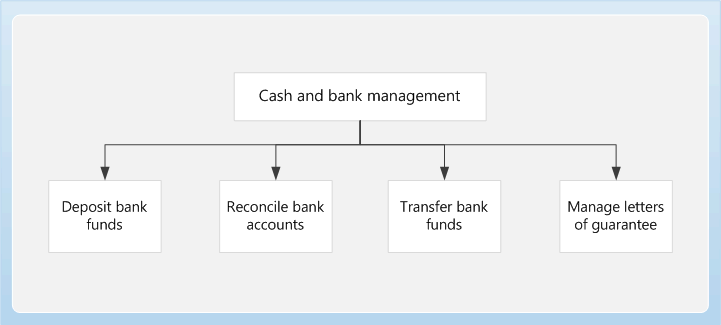Bank management is the process of managing a bank and all its activities. Bank management is the sector that puts all the efforts to maximize the total profit of the bank. The main target of bank management is to build an organic and optimal interaction system for total banking operations.
Key Takeaways
- The banking management works to coordinate the elements of banking activity
- Key duties of bank management are planning strategic analyses, implementing various techniques, etc.
- Bank Manager is the highest role within the Management department of a bank
- The characteristics of bank management depend on liquidity management, planning quality, risk management, etc.
It’s the Bank Management Sector.
A bank’s efforts to maximize profits depend on a variety of concerns. You need to have all these concerns, such as asset management, liquidity management, capital management, and liability to work in conjunction to derive profits.
And, Bank Management governs such concerns.
Article at a Glance
1. The Definition of Bank Management
2. Objectives of Bank Management
3. Characteristics of Bank Management
4. What Does a Bank Manager Do?

The Definition Of Bank Management
One can come across many definitions of bank management. Usually, bank management means the process of governing the bank’s statutory activities. Bank management can be defined by the particular object of management – financial activities connected with banking concerns. Bank management also concerns the application of management functions in the banking sector.
Objectives Of Bank Management
The main objective of bank management is to coordinate elements of banking activity with a view to generating profits. While doing so, bank management ensures an optimal and organic system of interaction with those elements.
Characteristics of Bank Management
The characteristics of bank management are determined by the following factors:
1. Management expertise in planning, management functions, strategic analyses and policy development
2. Liquidity management
3. Planning quality
4. Risk management
5. Interest rate, currency, and credit risk management
6. Management of human resources
7. Management of control systems
8. Auditing, and internal auditing
9. Management of profitability and risk liquidity
10. Management of information technology system: accounting, strategic planning, current analysis, and integrated workflow automation
What Does A Bank Manager Do?
A person tasked with managing the bank’s financial and other banking activities is called a Bank Manager. Here’s what a Bank Manager has to perform regarding bank management:
1. A Bank Manager discusses the trends affecting the whole financial services and related industries.
2. He/she outlines how the behavior of banks changed.
3. A Bank Manager assesses the effects of change for bank risk management.
4. A Bank Manager recognizes the need to coordinate risk management procedures to an ever-changing international financial system.
5. He/she assesses the relationship between capital adequacy and bank performance.
6. A Bank Manager discusses how interest-rate risk can be averted using hedging activities through the use of financial derivatives.
7. A Bank Manager analyzes how costs and funding mix are vital to bank management when giving loan and making investment decisions.
What Is Bank Management System?
The Bank Management System AKA BMS is actually an application (That the user can use online) that handles the payment for financial institutions/organizations to BFS (Bureau of the Fiscal Service).
Bottom Line – to maximize profits, you need concerted efforts coordinating all the banking concerns. And, effective bank management can help you derive maximum profits with minimum risks.
References:
1. https://www.taconsult.biz/en/knowledge/what-is-bank-management/
2. https://www.wsbi-esbg.org/KnowledgeSharing/consultancy/Pages/Bank-Management.aspx
Last Updated on October 5, 2022 by Magalie D.

Magalie D. is a Diploma holder in Public Administration & Management from McGill University of Canada. She shares management tips here in MGTBlog when she has nothing to do and gets some free time after working in a multinational company at Toronto.




